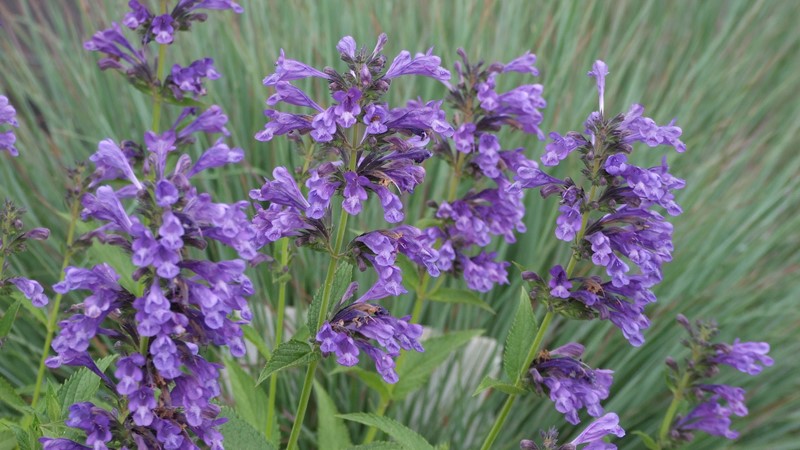


From Paul Westervelt of Saunders Brothers, Inc.
It takes a lot to get me excited about a Coreopsis. Most of the time I find new varieties to look like all the others and more often than not the newer varieties eek through winter in our ground trials (when they make it at all) while the classic varieties immediately beside them laugh and point as they sail through winter without issue. But every now and again, something outstanding comes along. Coreopsis Li’l Bang™ ‘Riding Hood’ (pictured below) brings the vibrant red-maroon flower color of ‘Mercury Rising’ to a plant better sized for retail sales and suitable for gardens of all sizes. While many Coreopsis require good drainage in winter, ‘Riding Hood’ overwintered in the clay soil of our ground trial beautifully two years in a row. It appears the wolf of winter is no match for this Riding Hood. All the better to plant with. Winter hardy from USDA zones 4-8.

Like Coreopsis, Gaillardia often don’t look different enough for me to tell one from another without checking the tag, but the SpinTop™ series has been a standout. We first noticed how nicely they fill a pot, bulking before blooming and then holding that muffin shape for weeks on end. Then we noticed a welcome resistance to white smut – a funny named disease, but the resulting unsightly lesions on the leaves are no joke. The clincher was year over year performance in the ground. Gaillardia are naturally short-lived perennials, but some series are so short lived that it’s awkward to include them in a perennial lineup. The SpinTop™ series has overwintered beautifully in our ground trials two years in a row and shows no signs of slowing down. Hardy from USDA zones 5-9.
Most of the perennials we trial are new versions of something already established as a garden favorite – Salvia, Echinacea, Phlox, and so on. Lysimachia lanceolata ‘Burgundy Mist’ (pictured below) does not make that list. The species is a threadleaf perennial loosestrife native to most of the eastern US. Normally green, ‘Burgundy Mist’ is a naturally occurring red leaf form found by GroWild Nursery in Tennessee. The burgundy foliage forms a soft mound each spring and is covered in small yellow flowers for months on end through summer. In the fall, the foliage brightens a bit further. Best foliage color in full sun, but the plant seems equally happy, if less vibrant, in shade. It spreads slowly, but steadily - not at a rate that will catch anyone by surprise, unlike some others in the genus. Prefers moist soils and has thrived in the clay soil of our ground trials. Hardy from USDA zones 4-8.


Nepeta subsessilis Prelude™ Purple PPAF: I thought I knew Nepeta... gray-green mounds of foliage with dusty lavender blue flowers and all of them variations on a theme. Then we trialed a Nepeta with huge, rich and vibrant purple flowers that covered an easy to manage mound of foliage. Whoa! The following spring, the overwintered plants were no longer the modestly-sized versions I remembered, they were 3’ tall, more upright than mounding, and the flowers were in clusters on the tops of the stems. They were spectacular! As a full-blown plant geek, I’m not always excited to watch breeders steadily reduce the size of our larger perennials. I like the big ones. So to see such a lovely perennial spend its first year as a grower and retail friendly muffin before metamorphosing in year two into an even showier version with great substance and character, well…that feels like the counter trend I’ve been hoping for. Plant in full sun, give it a little room, and enjoy. Deer resistant and hardy from USDA zones 5-9. Pictured at top.
© 2025 Handpicked For You® | Website by 37 Gears